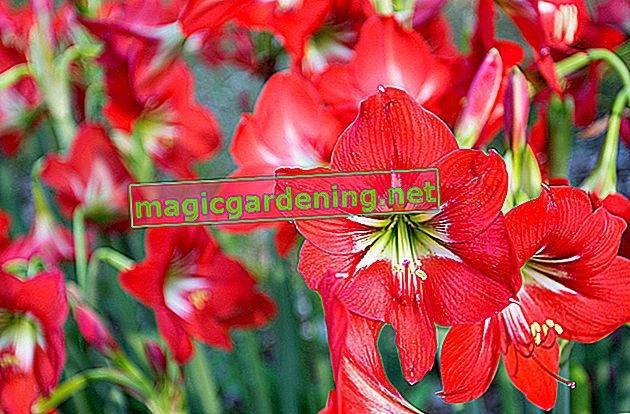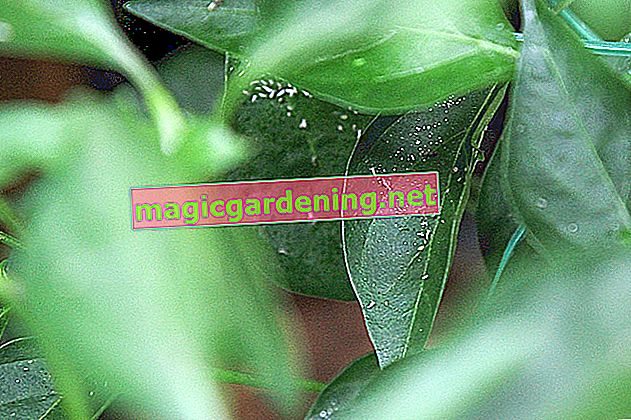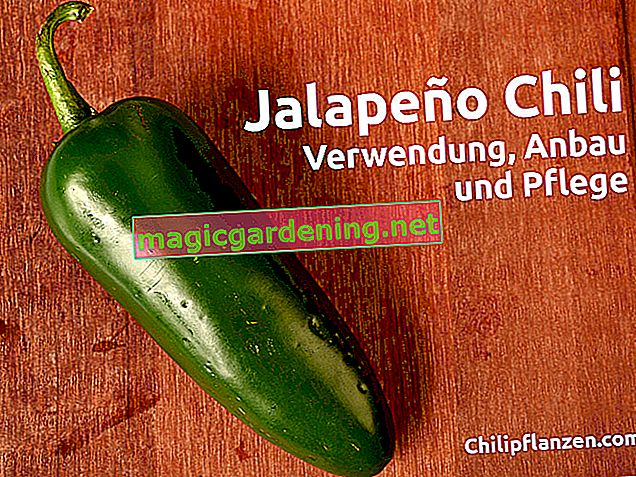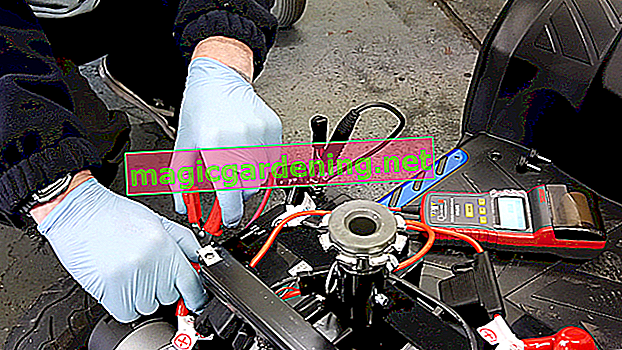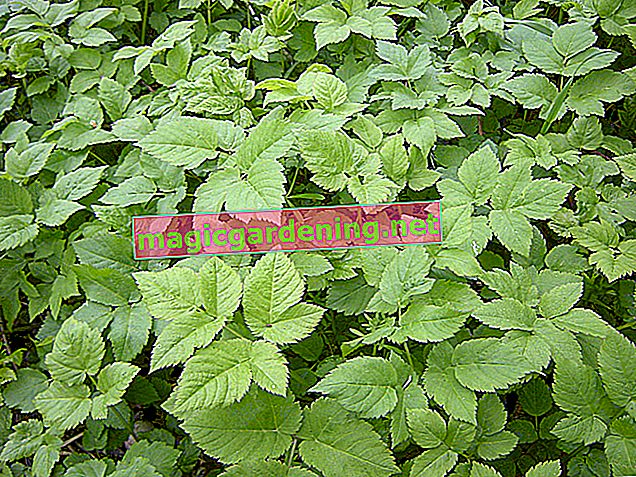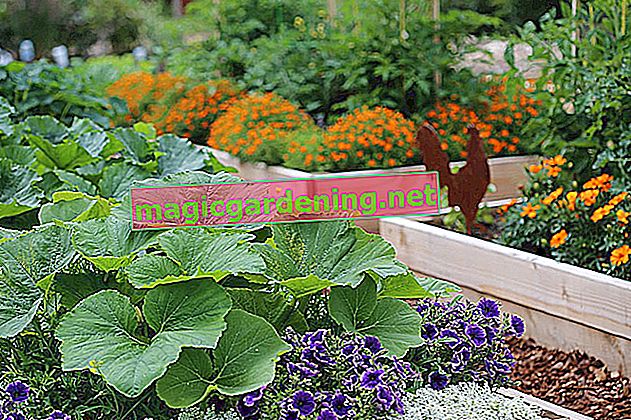
Plant carnation correctly
If you plant premature carnations either in May or August / September, the cushion perennials will find ideal framework conditions. In the sunny, sandy-dry location, dig small pits at a distance of 20-30 cm. Clay-reinforced, compacted earth is optimized with sand and fine grit in case of doubt. (12.80 € at Amazon *) If a pH value test in advance gave a result greater than 7, mix in rhododendron or leaf earth as an acidic component. Pot out the young plants and place them as deep in the loose soil as they were in the nursery pot before. Soft rainwater is poured on.
also read
- How to care for your beach carnation (Armeria maritima) - tips and tricks
- Carnation prefers a location in full sun
- Carnation - location, care, reproduction & overwintering
Care tips
The main pillar of professional care by Armeria is the targeted pruning at the right time. The water and nutrient supply take a back seat. We have summarized all relevant measures for you here:
- Clean off withered flower heads every few days
- After the first flowering period, cut back to just above the leaves
- Also cut off the second bloom up to the top of the leaves
- Do not remove the leaves near the ground until January / February
- Water from time to time during summer drought
- Apply starting fertilization at the end of April and after the first pruning
In view of a hardiness of up to - 35 degrees Celsius, Armeria do not require winter protection. Rather, the evergreen foliage takes on a natural protective function. Carnations in the pot move to frost-proof, light winter quarters or are planted in the bed in autumn.
Continue reading
Which location is suitable?
The carnation is predestined for a location in full sun with loose, sandy-dry soil, such as is found in rock gardens, rock steppes and on dry stone walls. In addition, the busy summer shrubs are well suited to the sunny, dry ambience of a heather garden. The armeria is often used to border tombs in sunny locations.
Continue reading
The correct planting distance
With a planting distance of 15-20 cm you give a beach carnation (Armeria maritima) enough space for a harmonious development of its spherical silhouette. In contrast, the broad-leaved carnation (Armeria pseudarmeria) likes a slightly larger distance to its neighbors of 25-30 cm.
What soil does the plant need?
Across the board, Armeria species thrive in sandy-loamy soil that is loosely structured and humic. The lower the lime content, the more vital the cushion perennial trumps with ever new flower heads. It is therefore an advantage for successful cultivation if the pH value is in the acidic to neutral range of 4.5 to 7. Therefore mix a handful of rhododendron or bog soil in the pot as an acidic component.
When is the flowering time?
The adorable flower heads stretch out from May to July with bright colors towards the sun. In order to preserve the sparkling splendor of flowers through the summer, withered flowers are cleaned up promptly. If the perennial is pruned down to the foliage after the first flowering period, it will reliably reassemble for an opulent subsequent flowering.
Cut carnation correctly
The distinctive carnation thrives all summer long as if it were peeled from an egg if withered flower balls are cut off immediately. This not only creates a clean appearance, but also creates space for more splashes of color above the bushy foliage. When an Armeria has completed its first flowering cycle, cut all stems back to just above the foliage. A portion of compost replenishes the used up nutrient reserves. The plant then diligently reassembles for a magnificent second bloom within a few weeks. The filigree, evergreen leaves adorn the garden until February, only to be cut off close to the ground.
Continue reading
Water carnation
If the summer weather corresponds to the norm with an alternation of sun and rain, no further watering is necessary on drought-loving carnations. Only in pot culture does the thumb test provide information about a possible water requirement. In order to meet Armeria's request for a slightly acidic substrate, we recommend using collected rainwater or decalcified tap water.
Fertilize carnation properly
Lean, sandy-dry soil is favorable for carnations. Too high a stock of nutrients tends to have a weakening effect on the level of competition against neighboring beds. Nevertheless, the two-fold application of compost or horn shavings (€ 6.39 at Amazon *) has a beneficial effect on the abundance of flowers from the end of April and immediately after the pruning after the first flowering period.
Overwinter
The carnation is equipped with a robust frost resistance. Even temperatures of -35 degrees Celsius do not cause any problems for an Armeria. The evergreen foliage also acts as a natural protective cover for the root ball. In the narrowly limited substrate volume of the balcony box and pot, however, there is a risk that the root ball will freeze through. Planters with a diameter of less than 30 cm are therefore placed in a light, frost-free winter area. Where this plan fails due to a lack of space, resourceful hobby gardeners simply plant the perennials in the bed.
Propagate carnation
A method of propagation without horticultural stumbling blocks is the division of the root ball. Since a carnation is rejuvenated at the same time, this method tops the alternative sowing. Optionally in May or September, dig up the root ball widely and place it on a solid base. Use a knife or sharp spade to cut the armeria in half. Now is the best time to cut out bald areas and rotten roots. While maintaining the previous planting depth, place the cushion shrubs in the ground at the new location.
Continue reading
How do I transplant properly?
When transplanting grass carnations, you kill 3 birds with one stone. The upholstered shrub is rejuvenated, moves to a prepared location and can be propagated. The time window for this cultivation measure opens twice per season for Armeria. In May or August / September you dig up the rhizome, cut out old and stunted areas and then divide the plant into two or more segments. Plant the carnations again in the new, sunny location with loose, slightly acidic soil. The more precisely the previous planting depth is maintained, the more beneficial for rapid growth.
Nice varieties
- Düsseldorf pride: The Armeria maritima impresses with its vivid color of flowers in carmine red and a spherical habit
- Armada White: The premium variety develops delicate cushions in bright white from May to July
- Roses: A delightful dwarf armeria that contrasts wonderfully with pink flowers over evergreen foliage
- Ballerina Lilac: It towers over the popular beach carnation with its purple flower balls by up to 20 cm
- Bess Ruby: The up to 30 cm high flower stalks in a rich purple rose are ideal for cutting vases

